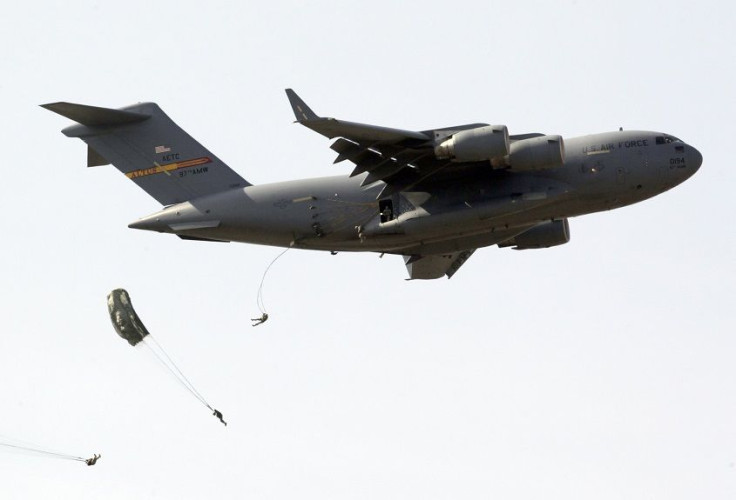Long Goodbye: After 72 Years In Operation Boeing (BA) Commits To Long Beach Closure In Mid-2015, Ending C-17 Globemaster And 2,200 Jobs

The Boeing Company (NYSE:BA) next year will finally close the Long Beach, Calif., factory where it produced the massive and iconic C-17 Globemaster III military transport plane, bringing an end to 72 years of aviation history and thousands of jobs.
The plant’s closure, which the Chicago-based aerospace giant announced on Monday, will be three months earlier than expected and means that California will no longer have any aircraft production plants for the first time in nearly a century.
The closure was initially announced in September 2013 after the U.S. Air Force said it wouldn't commit to buying any more C-17s and after attempts to sell the aircraft to other militaries proved largely unsuccessful.
The 2,200 employees that work on the famous aircraft now face an uncertain future as Boeing looks to early retirement and attrition to trim the workforce. Those left behind either face unemployment or the prospect of moving to different Boeing plants, which will likely be the 777X engine manufacturing plant in Washington state.
“Basically, we just roll with the punches,” Stan Klemchuk, president of the United Aerospace Workers Local 148, which represents about 1,100 Boeing mechanics and other employees, said Monday in an interview with the Long Beach Press Telegram.
“It’s very disheartening right now, because most of my members are in their 50s, early 60s,” he said. “It’s hard enough for a person these days right out of college to get a job right now.”
Boeing, Local 148 and its members have known that this day was to come for a long time. The plant has been earmarked for closure several times over the past six years, but new orders, primarily from the U.S. Air Force, which bought 90 percent of the 253 C-17s that were built, came in and saved it from closure on several occasions.
While Boeing tried in vain to sell the aircraft to foreign militaries, the state of California harbored hopes that it would snag production of the new 777X aircraft, guaranteeing 20 years of manufacturing at the plant, but those last hopes were dashed after Washington state won the contract.
By the time 2012 came around, the offers had dried up and the writing was on the wall as Boeing cut one-third from the workforce and plans were put in place to permanently end production of the aircraft.
HISTORY
The Long Beach plant’s doors opened on the eve of U.S. involvement in the World War II, just 21 years after the Douglas Aircraft Company was established in the back of a California barber shop in 1920. It later merged with McDonnell to form the McDonnell Douglas Company and manufactured around 15,000 aircraft at its Long Beach plant.
The company distinguished itself during the war delivering around 31,000 aircraft, including the C-47 Skytrain (a version of the DC-3), SBD dive-bomber, C-54 transport (the military version of the DC-4), A-20 and A-26 attack bombers and B-17 bomber.
After that, the company dominated global aviation. By the 1950s, its aircraft accounted for 90 percent of global aviation and the DC-3, the backbone and beginnings of many airline companies today, was rolled off the production line more than 10,000 times.
By the late 1980s and mid-90s, the famous name had begun to fade. On Oct. 25, 1996, McDonnell Douglas announced it wouldn't develop the MD-XX super jumbo program. The announcement signaled the end of the company's position as a first-tier commercial aircraft producer. A stock market downturn in the fourth quarter of 1996 meant that McDonnell Douglas was ready to be taken over. While the board attempted to consolidate its position, the final nail in the coffin occurred on Nov. 16, 1996, when then-secretary of defense William Perry announced that Boeing and Lockheed Martin Corporation (NYSE:LMT) had been selected to compete in the 51-month concept demonstration phase of the Joint Strike Fighter competition, which Lockheed Martin went on to win.
When a merger with Boeing finally took place on July 1, 1997, the C-17 had been fully developed for the U.S. military and was in full production in Long Beach. The iconic aircraft supported thousands of jobs in the region and will continue to support some limited roles as Boeing fulfills its obligation to maintain the C-17s now in service.
Boeing has refused to discuss the future of the plant, but it may be sold to developers given its sprawling size, proximity to downtown Long Beach and high real estate value.
Spokesmen for Boeing and the Local 148 union didn't return several calls for comment.
© Copyright IBTimes 2024. All rights reserved.






















